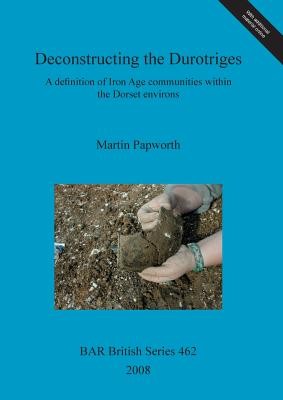
- We will send in 10–14 business days.
- Author: Martin Papworth
- Publisher: British Archaeological Reports Oxford Ltd
- ISBN-10: 1407302213
- ISBN-13: 9781407302218
- Format: 21 x 29.7 x 3.2 cm, softcover
- Language: English
- SAVE -10% with code: EXTRA
Reviews
Description
Ptolemy's second century geography is the main source traditionally used when dividing pre-Roman Britain into tribal areas. In it he describes the Durotriges as inhabiting Dorset and parts of Somerset, Wiltshire and Hampshire. This large-scale study surveys the 'Durotrigan zone' in Dorset looking at settlement patterns and types, ceramics and coin distribution to ask whether the Durotriges can be considered as a homogenous entity as presented by Ptolemy. In fact settlement forms showed considerable diversity, which can also be seen in differing burial customs and belief systems, and Papworth ultimately sees the area as being inhabited by co-existing, but distinct communities. Coin evidence, however shows that particularly towards the end of the pre-Roman period the communities were linked together, probably in a form of trading block.
EXTRA 10 % discount with code: EXTRA
The promotion ends in 17d.17:16:25
The discount code is valid when purchasing from 10 €. Discounts do not stack.
- Author: Martin Papworth
- Publisher: British Archaeological Reports Oxford Ltd
- ISBN-10: 1407302213
- ISBN-13: 9781407302218
- Format: 21 x 29.7 x 3.2 cm, softcover
- Language: English English
Ptolemy's second century geography is the main source traditionally used when dividing pre-Roman Britain into tribal areas. In it he describes the Durotriges as inhabiting Dorset and parts of Somerset, Wiltshire and Hampshire. This large-scale study surveys the 'Durotrigan zone' in Dorset looking at settlement patterns and types, ceramics and coin distribution to ask whether the Durotriges can be considered as a homogenous entity as presented by Ptolemy. In fact settlement forms showed considerable diversity, which can also be seen in differing burial customs and belief systems, and Papworth ultimately sees the area as being inhabited by co-existing, but distinct communities. Coin evidence, however shows that particularly towards the end of the pre-Roman period the communities were linked together, probably in a form of trading block.


Reviews